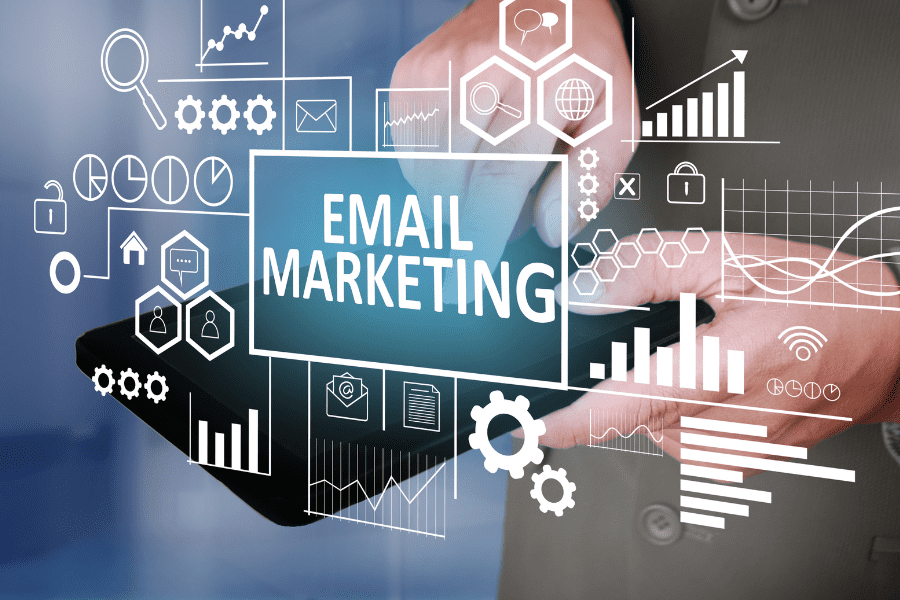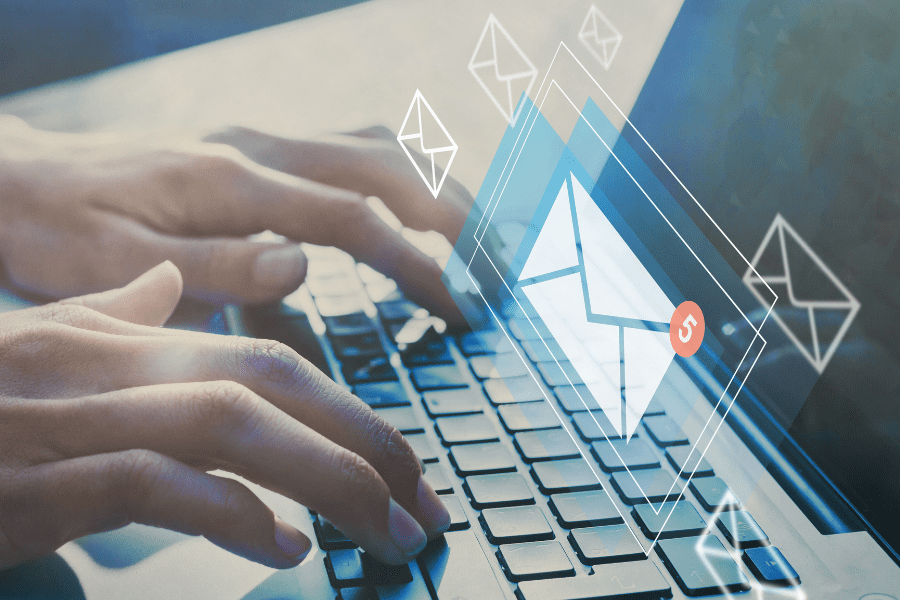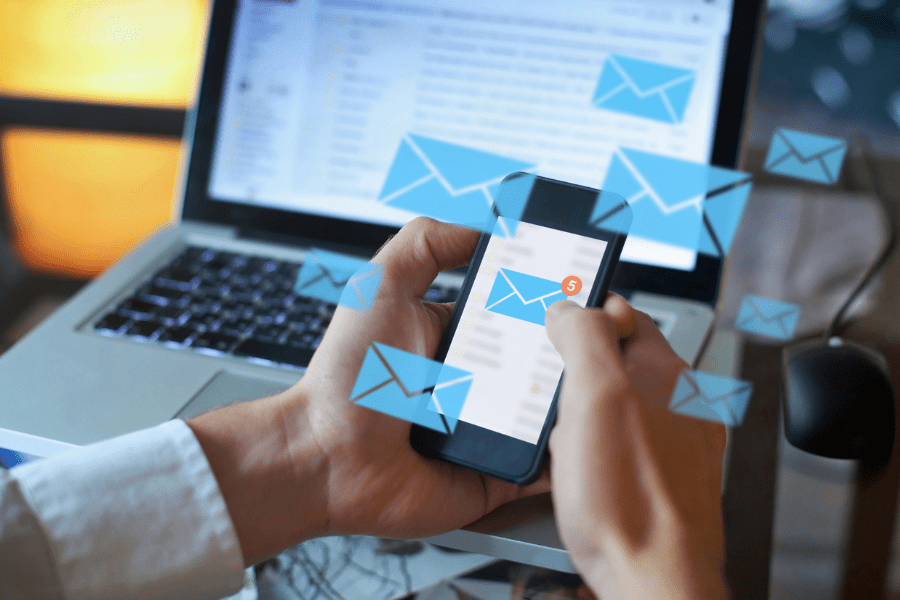Feeling a bit overwhelmed by the thought of creating an email marketing campaign that actually works?
Want your (easily distracted) readers to actually open your emails, click your links, and buy your products, but not sure how to get there?
Maybe to you, successful email marketing seems like magic, pulled off by a select few copywriting magicians hoarding secret email knowledge.
But actually, email writing isn’t that mysterious.
If you want to create an email campaign that makes your readers eager to open your messages and buy whatever you’re selling, you just need to keep ten things in mind…

The Key to a Captivating Email Campaign
A successful email campaign is an ace up your sleeve in today’s digital world.
Why?
They’re budget-friendly yet highly effective, allowing you to connect with a vast audience without breaking the bank.
But the real magic lies in personalization — you can tailor messages to resonate with different audience segments, thereby driving higher customer engagement.
Moreover, emails dodge the clutter of social media, reaching your customers directly in their inbox.
And the icing on the cake? They offer a staggering average of $36 for every dollar spent. That’s a 3600% return on investment!
It’s a clear signal — leveraging email marketing campaigns can significantly elevate your business game.
Here’s what you can do with yours…
1. Prime Readers with a Powerful Preview
Let’s face it, email inboxes are like bustling city centers — there’s so much happening!
Amid this chaos, your email needs a megaphone, and that’s precisely where preview lines (or preheaders) come in.
Picture this: your email subscriber is scrolling through their inbox.
Your subject line grabs their attention. It’s like the front cover of a book — intriguing, tempting.
But what seals the deal is the preview line — it’s like the blurb that makes them say, “I’ve got to read this!”
A power-packed preheader extends the narrative of the subject line.
It’s the perfect space to insert a teaser, a curiosity piquer, or an irresistible offer.
Imagine your subject line says, “Unlock the Secret of Instant Savings!” Your preview line could add, “Spoiler: It involves your next coffee purchase.” Now, wouldn’t that spark curiosity?
The great thing about this tactic is that it’s quick and simple.
In less than 10 minutes, you can craft a compelling preheader that turns your email from ‘just another message’ to a ‘must-open.’
Plus, most email marketing platforms provide a preview line option, so all you need to do is to utilize it to its full potential.
2. Ditch the Email Template Mindset

We’re inundated with flashy emails, complete with banners, images, and hyperlinks.
So when a simple, text-based email pops up, it stands out. It’s like receiving a handwritten letter amidst a sea of printed bills — it’s going to capture attention.
The idea is to make your emails feel less like mass communication and more like a one-to-one chat.
You might start with something like, “Hey [Subscriber’s Name], I thought you might like this…”, then go on to discuss something of value to the reader.
No graphics, no promotional messages, just value. It’s this authenticity that can make your email a breath of fresh air.
But here’s a pro tip — don’t ditch an email template entirely, but rather use this email marketing strategy as an occasional surprise.
It’s like an unexpected treat that shows your subscribers you see them as individuals, not just email addresses on an email list.
Plus, these plain-text emails are super quick to create. No fussing with email design, just straight-up, genuine conversation.
Mixing in these text-only emails with your regular template-based ones ensures a good balance between maintaining your branding and building a personal connection.
It’s a small tweak to your email marketing campaign, but it can make a world of difference in the way your subscribers perceive and engage with your emails.
3. Gamify Your Message
Let’s be honest; we’re all suckers for games — they tickle our competitive streak and promise a bit of fun in our routine lives.
So why not leverage this in your email marketing campaign?
Start with something simple. How about a quiz related to your niche?
For instance, if you’re in the fitness industry, a quiz titled “What’s Your Ideal Workout Style?” could drive customer engagement.
You could then provide personalized workout tips based on their responses.
Or try hosting a mini-contest where subscribers can submit tips or experiences related to your product or service.
The winning entry could be featured in your next newsletter or get a special discount.
The benefits?
Well, apart from a surge in engagement, you also build a community.
When subscribers participate, they feel more connected to your brand. Plus, it’s an excellent opportunity to gather insights about your target audience, which can inform future campaigns.
4. Embrace the Unsubscribe
It’s natural to flinch when someone unsubscribes.
After all, you’ve worked hard to grow that email list, right? But here’s a counterintuitive truth — unsubscribes can actually be good for your email marketing strategy.
Consider this: an inactive subscriber who isn’t engaged is unlikely to convert into a potential customer.
They might even mark your emails as spam, which can affect your sender reputation and email deliverability.
So instead of viewing unsubscribes as a loss, consider it as decluttering your list. And here’s a tip;
Make the unsubscribe option visible.
Yes, you heard that right.
It gives your subscribers the freedom to choose, and those who stay are more likely to be genuinely interested in your offerings.
5. Keep it Short, Sweet, and To the Point

You know the saying, ‘Brevity is the soul of wit’?
Well, it holds true in email marketing too. In a world where inboxes are flooded, nobody has the time or patience for lengthy emails.
The quicker you deliver your message, the better.
Think of your email as a mini elevator pitch — you’ve got a few seconds to make an impact.
So, make sure every word counts. Get straight to the point, avoid fluff, and make your content easy to scan with bullet points or subheadings.
Let’s say you’re launching a new product.
Instead of a detailed description, try, “Meet our new [Product name]. It’s [unique selling point] meets [another unique feature]. And did we mention, it’s [third amazing feature] too!”
It’s short, impactful, and definitely memorable!
6. Master the Art of the P.S.
Ah, the power of the P.S. — it’s almost like a secret weapon in email marketing!
Why does it work?
It’s simple.
When readers scan through your email, their eyes naturally drift to the end. And a P.S. at the end of your email is like a final nugget of wisdom, a last surprise that sparks curiosity.
So, what could you include in the P.S. section?
It could be a bonus tip, a gentle reminder, or a sneak peek into your next email.
For instance, a P.S. saying, “P.S. Watch your inbox next Tuesday. We have a surprise that’ll knock your socks off!” is sure to build anticipation.
Remember, your P.S. doesn’t have to be long.
A short, punchy line often works best. It’s an effortless yet effective way to add a dash of intrigue to your emails and keep your readers hooked till the very end.
So, the next time you’re sending out an email, don’t forget the P.S. magic!
7. Leverage Storytelling for the Win
Storytelling and email marketing might seem like an odd pair, but they’re a match made in heaven.
Stories, when told well, captivate the reader’s attention and make your message more relatable.
Plus, they’re an excellent way to show the human side of your brand.
So, what stories could you share?
It could be a success story of a customer who benefited from your product.
Or a story about the journey of creating your latest product.
Even a quick anecdote from a team member can add a touch of authenticity.
Remember, the key is to weave the story around your main message.
You don’t want the story to distract from your main objective; instead, it should enhance it. And yes, keep it short and engaging!
8. Offer The VIP Treatment
Treating your subscribers like VIPs can do wonders for engagement. It’s about making them feel special and valued.
But how can you do that without busting your budget?
Try giving them early access to your sales or new products, or exclusive content that’s not available to non-subscribers.
For example, if you run a fitness business, you could offer an exclusive workout video.
Or, if you’re in e-commerce, give your subscribers an exclusive sneak peek at a new product before it hits your store.
The benefits are twofold.
Your subscribers feel special, and you create a sense of excitement around your offerings. Plus, it encourages more people to subscribe to your emails.
After all, who doesn’t want the VIP treatment?
9. Tap into FOMO with Limited-Time Offers
We all know the pang of FOMO (Fear of Missing Out) — it’s a powerful motivator!
A limited-time offer in your email marketing campaign can create a sense of urgency and push an email subscriber to act.
But how do you ensure your limited-time offer doesn’t come across as a sales gimmick?
The secret is authenticity.
Your offer should provide genuine value to your subscribers.
For example, it could be a limited-time discount, a bonus product for the first ‘X’ number of buyers, or exclusive webinar access for a limited period.
And remember, communication is key.
Clearly mention the end date or time for the offer, and maybe even send a reminder as the deadline approaches.
Your subscribers will appreciate the heads-up, and you might just see a surge in conversions.
10. Harness the Power of Social Proof
There’s a reason why product reviews and testimonials work — they build trust!
Showcasing social proof in your emails can strengthen your relationship with your subscribers and drive conversions.
You could share a testimonial from a happy customer, a case study demonstrating the effectiveness of your product, or even positive feedback received on social media.
The aim is to show your subscribers that people like them have benefited from your offerings.
For instance, if you’re promoting a skincare product, a before-and-after picture along with a testimonial could be convincing.
If you run a digital marketing course, a case study showing the improvement in a student’s business after taking your course would be powerful.
Including social proof in your email marketing campaign is a fantastic way to add credibility to your brand.
After all, we’re all more likely to trust a brand when we see others vouching for it!
Launch Your Winning Email Marketing Campaign

There you have it!
Ten tried-and-true tactics that’ll make your email marketing campaigns magical.
Each technique can help you grab your reader’s attention and take them one step closer to the sale. But when you combine these strategies, you can create an unstoppable campaign.
But of course, every marketer and niche and audience is unique.
You need to understand what your particular customers respond to, so test your campaigns regularly, and tweak your approach based on feedback.
And now, what are you waiting for?
You have the tools, and the knowledge. The only thing standing between you and skyrocketing sales is action.
Go ahead, implement these tactics, and watch your successful email marketing campaigns take off!



